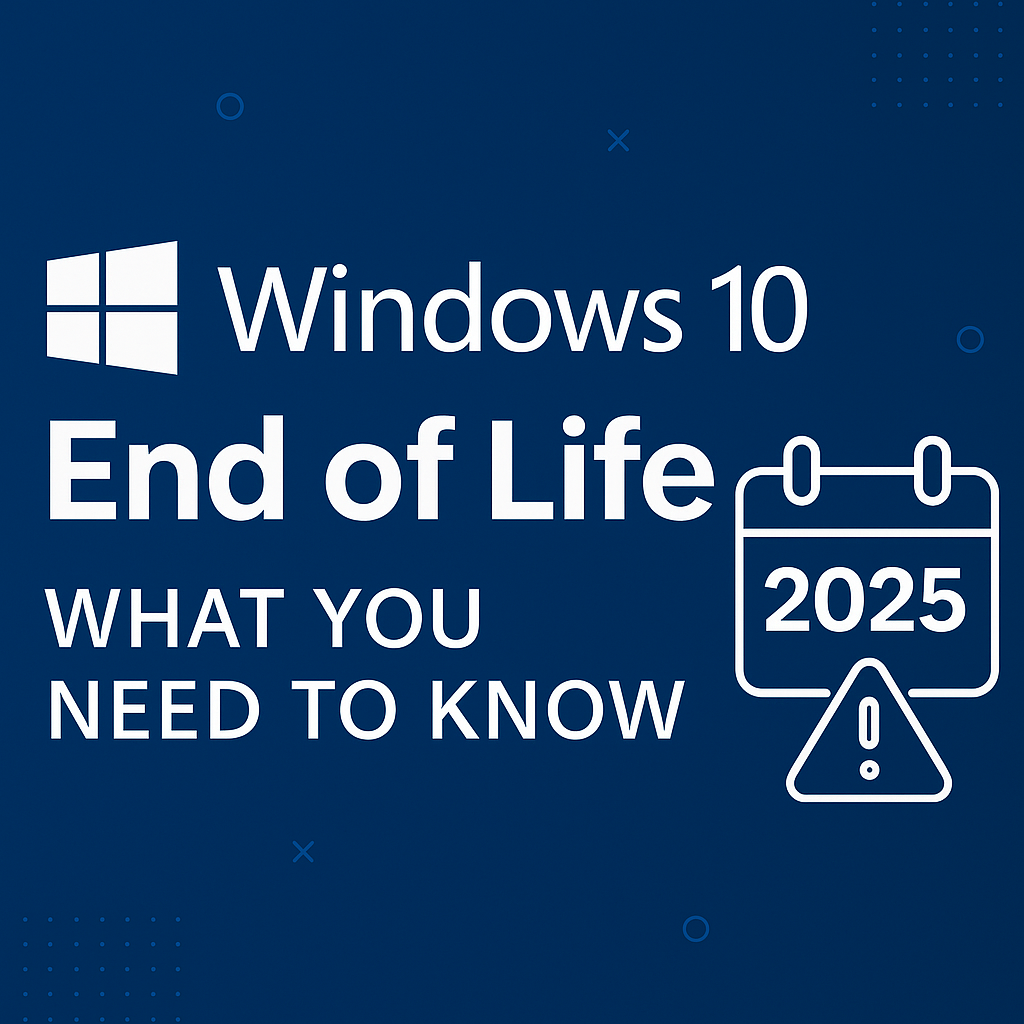When your organization retires outdated hardware, choosing a trusted IT asset disposition (ITAD) company is crucial. The right provider safeguards sensitive data, ensures regulatory compliance, and supports sustainability goals. The wrong one can expose your business to data breaches, fines, and reputational harm.
With data breach costs averaging $4.45 million in 2024 (IBM) and e-waste volumes continuing to rise globally, it’s more important than ever to evaluate ITAD vendors carefully. This guide outlines the key criteria, certifications, and questions that will help you select a secure, compliant, and transparent partner.
Why the Right ITAD Partner Matters
Every decommissioned server, laptop, or storage device holds confidential information. If not managed correctly, those assets can lead to:
- Data exposure through incomplete wiping or resale
- Regulatory violations under GDPR, HIPAA, or state privacy laws
- Environmental impact from improper disposal or export of e-waste
A well-qualified ITAD company protects your organization from these risks while maximizing the lifecycle value of your technology.
Certifications and Compliance Standards to Verify
Reputable ITAD vendors hold recognized certifications that prove their adherence to strict environmental and security standards. Before committing, confirm that your provider maintains current credentials.
| Certification | What It Demonstrates | Why It’s Important |
| R2v3 / e-Stewards | Responsible recycling and reuse of electronics | Confirms ethical handling and traceability of materials |
| NAID AAA | Verified data-destruction processes | Ensures secure data wiping and shredding procedures |
| ISO 9001 / 14001 / 27001 | Quality, environmental, and information-security management | Demonstrates mature process controls and auditing systems |
| NIST 800-88 / IEEE 2883-2022 | Data-sanitization standards | Defines accepted methods for clearing, purging, or destroying data |
| HIPAA / GDPR / DoD compliance | Privacy and data-protection frameworks | Required for organizations handling regulated or sensitive data |
Providers that clearly document how they comply with these frameworks tend to be more transparent and audit-ready.
Data Destruction and Chain of Custody
At the core of every ITAD program is the assurance that sensitive data has been permanently and verifiably removed. A reputable ITAD vendor should be able to walk you through exactly how data is handled from the moment equipment is collected until the moment it is sanitized or destroyed. Secure data destruction is not a one-size-fits-all service, it should align with recognized frameworks like NIST 800-88 or IEEE 2883-2022, which define standards for clearing, purging, and destroying data across various media types.
Equally important is a documented chain of custody, which records how each asset is handled throughout the process. This includes who transported it, where it was stored, how it was sanitized, and when destruction occurred. Certificates of destruction, including asset serial numbers, offer further proof of compliance and should be standard deliverables from your provider. In higher-risk environments, chain-of-custody may also include real-time asset tracking and tamper-evident packaging, especially for drives or devices leaving secure facilities.
Ensuring that the personnel involved in data destruction are vetted and background-checked adds another layer of trust. Ultimately, a strong data-security protocol reduces risk exposure and helps your organization demonstrate compliance during internal audits or regulatory reviews.
Environmental Responsibility and Sustainability
Sustainability has become a critical consideration in ITAD selection, particularly as organizations face increasing pressure to meet environmental, social, and governance (ESG) goals. The right ITAD partner should prioritize sustainability not as a side benefit, but as a core service offering. This includes diverting materials from landfills, maximizing component reuse, and adhering to environmentally responsible recycling practices.
Many leading providers operate under a zero-landfill policy, meaning they either refurbish, reuse, or responsibly recycle all assets in compliance with e-Stewards or R2v3 standards. Downstream recycling partners should be fully vetted and certified to ensure responsible disposal of e-waste and avoidance of illegal exports.
Reporting also plays a role in sustainable practices. Clients should be able to receive environmental impact summaries, such as how many pounds of equipment were diverted from landfill or how much carbon footprint was avoided through reuse and remarketing. These reports are not only useful for internal ESG tracking, but also support public CSR reporting and sustainability certifications.
Value Recovery and Asset Remarketing
One of the most underutilized benefits of a good ITAD program is the opportunity to recapture value from retired technology. Rather than viewing end-of-life hardware as a sunk cost, organizations can partner with ITAD vendors that offer remarketing and resale services to extend the financial life of their assets.
A capable provider will assess whether decommissioned equipment, such as servers, laptops, or networking hardware, has residual market value. If it does, the vendor should be able to refurbish the equipment and resell it through appropriate channels, either wholesale or retail, depending on condition and demand. This process requires transparency: clients should receive detailed resale reports outlining the number of units resold, the resale price, and the percentage of revenue returned.
Some providers may also offer guaranteed buyback programs or fair-market-value assessments upfront, which can be useful for planning asset refreshes or budgeting for new technology. By turning ITAD into a revenue stream, value recovery adds measurable ROI to what is often viewed as a compliance exercise.
Logistics, Transportation, and Liability Protection
Secure transportation is another often-overlooked but essential element of a trustworthy ITAD provider. Vendors should offer insured, GPS-tracked vehicles and tamper-evident containers to protect assets in transit. Documentation at each step, such as serialized palletization and signed pickup manifests, ensures that every asset is accounted for throughout the process.
In addition to physical security, liability coverage matters. Leading ITAD providers carry cyber and environmental insurance, protecting clients in case of accidental data exposure or environmental harm during the disposal process. This risk mitigation is especially important for organizations handling regulated data or operating in tightly controlled industries like healthcare, finance, or government.
Transparency and Reporting
Visibility is one of the strongest indicators of a trustworthy ITAD vendor. Organizations need to know not just that their equipment was processed, but how, when, and where each step occurred. Providers should offer comprehensive reporting tools, such as asset tracking dashboards, allowing IT teams or compliance officers to monitor the status of each device in real time.
Good reporting doesn’t end with a destruction certificate. Look for providers that supply audit-ready documentation detailing every phase of the disposition process, pickup logs, chain-of-custody reports, serial number inventories, and destruction timelines. These reports should align with any applicable internal security or regulatory requirements, making it easy to validate processes during a compliance audit or vendor assessment.
Equally important is clear and responsive communication. You should have access to a point of contact who understands your project requirements and can quickly respond to issues or provide clarification. The most effective ITAD relationships are built not just on technical capabilities, but on ongoing trust and transparency.
The ITAD Provider Evaluation Checklist
Use this checklist to guide vendor comparisons:
- Do they hold current R2v3, e-Stewards, or NAID AAA certification?
- Can they document a secure chain-of-custody for each asset?
- Are data-erasure and destruction methods compliant with NIST 800-88 or IEEE 2883-2022?
- Do they provide proof of insurance for cyber and environmental liability?
- Are sustainability and zero-landfill commitments part of their policy?
- Do they offer transparent value-recovery or resale reporting?
- Can they demonstrate strong client references and regulatory audits?
Answering “yes” to all seven is a strong indicator that a provider meets enterprise-grade ITAD standards.
The Bottom Line
Selecting an ITAD company is both a security and sustainability decision. The best providers combine compliance expertise, environmental responsibility, and transparent communication to deliver peace of mind throughout the asset-disposition lifecycle.
By following this checklist, focusing on certifications, data security, chain-of-custody, and responsible recycling, organizations can confidently partner with a vendor that protects data, ensures compliance, and contributes to a circular technology economy.



